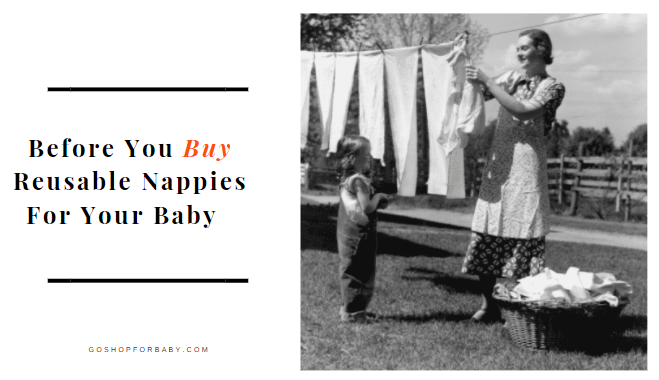Before You Buy Reusable Nappies For Your Baby
Before you buy reusable nappies for your baby, know that cloth diapering can be intricate.
There is no way of knowing exactly what may or may not work well for you or your baby in an instant.
This is why before you buy reusable nappies, you must do your due diligence.
Doing your due diligence is very important because it helps you arrive at your own conclusions.
As you know yourself, someone’s absolute gold standard might turn out to be another’s worst nightmare.
The world of reusable nappies is huge!
There are dozens of brands and types to choose from and a barrage of ideas to process.
Finding A Suitable Nappy
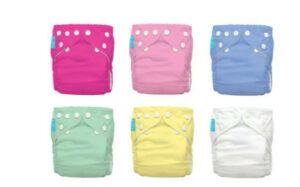
What you want ultimately is a nappy that is easy to use and to manage, able to contain blow outs, has a snug fit, comfortable, versatile, convenient, durable, kind to your baby’s skin and above all, makes economic sense to you.
Now, depending on the brand, cloth nappies don’t always come cheap for you initially.
Certain high end brands are pitched by some mums as being their best choice ever.
This isn’t to say that budget friendly brands aren’t equally as good.
In this world of cloth diapering, a budget friendly brand might work better for your baby than the very pricey and highly recommended brand.
So far
So far, you have learned about the evolution of the cloth nappies in choosing reusable nappies for your baby part one
In choosing reusable nappies for your baby part two, I told you about the interwoven roles you and your baby play in deciding your cloth diapering options.
You also learned about the beauty of cloth nappies, caring for your cloth nappies and laundry routines.
This is going to be the final part of this series and it’s in two parts.
There are tons of things to cover that just one post wouldn’t suffice.
In this first part, before you buy reusable nappies for your baby, I will be telling you about the different types of reusable cloth diapers, their pros and cons and their suitability for your baby.
The second part then, will be a review of some of the best reusable diapers around.
I would be using the term diapers and nappies interchangeably as they are one and the same.
The Americans say diapers while the British say nappies.
Before You Buy Reusable Nappies For Your Baby…
Before you buy or settle for any reusable nappy, you will need to know the different types, their pros and cons and their suitability for your baby.
There is no better way to do this, than to be willing to try out a variety of brands and types.
Be Willing To Try Out A Variety
One of the best ways of knowing what will work for your baby in terms of fit, comfort, containment, or allergic reaction, is to try out a variety of brands and types.
You can try out as many as you wish by buying trial packs or secondhand.
Some retailers offer clients a 30 day trial pack for their nappies with a promise of refunding a certain percentage, if they aren’t fully satisfied.
They are excellent because you can try out multiple brands before making an informed decision on which to settle for afterwards.
Second hand reusable diapers are the best kept secret in cloth diapering.
With them, you can try out as many brands and types as possible without breaking the bank.
You get to keep the ones you like and also resell those that didn’t work quite well for you.
Buying second hand is a very cost effective way of acquiring diapers but ensure that the elastic around the legs and waist are still in good condition.
Know The Different Types Of Cloth Nappies
Before you buy reusable nappies for your baby, it will also be wise to have a knowledge of the different types of cloth nappies.
Reusable nappies have evolved over the centuries, from the initial trial and error stages, to what has proven to work well for today’s mums.
Cloth diapering has moved on from the traditional flats and prefolds to more manageable and convenient modernised styles.
There are a wide variety of styles to choose from including pockets, sleeves, all in ones and twos and the hybrid nappies.
Be aware that some babies react to certain fabrics like wool, bamboo, and microfiber.
This tells me that not all nappy rashes are nappy rashes per se, but your baby reacting to the fabric itself.
Cloth nappies come in two distinct types: nappies without an outer protective shell/cover and those with an outer protective shell/cover with fasteners attached to secure them in place.
Nappies Without Protective Covers
Flats, prefolds, contour, fitted, and the tie -ups (outdated) come under this category.
Separate protective pants/wraps such as wool, microfleece, PUL (Polyester Urethane Laminate) or waterproof pants must be worn over them to prevent leaks.
In addition, you must also use snaps or pins (not my preference) to secure the nappies in place.
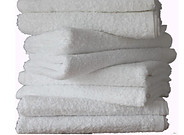
The traditional cloth nappy was the first proper form of baby diapering post Elizabethan era, and has been around since the 1800s.
Also known as flats, they are either rectangular or square shaped.
The most common fabrics used are cotton, terry, and muslin, although today, we have them in a variety of fabrics like bamboo.
They are flat and single layered, much like a large tea towel. You have to first fold them into shape to use.
A big plus for flats for me is that they are very versatile and could serve more than one purpose.
For example, I used my terries as bath towels and as protective overlays on the changing mat to make them less cold during nappy change.
I particularly liked to lie my babies’ on them for when I wanted to “air” their bums.
One mum said that she turned her cotton nappies into kitchen towels after a while, I turned my muslins into burp cloths.
Very thick terry can be cut up and used as inserts for pocket nappies.
One of my apprehensions about flats though, is that you may not achieve a snug or customized fit for your newborn.
That’s why I had leaks around the waist and legs.
I used to feel frustrated with the terry squares for my newborns because they didn’t grip their skinny legs well.
They were too bulky for their tiny frame, and didn’t contain runny poo even with the protective plastic pants over them.
So much has changed since then.
More absorbent and less bulky fabrics like bamboo and hemp when used with the sleakier and better covers like PULs, wool and fleece overpants work much better.
Please click here for a how to fold diapers tutorials by Green Mountain Diapers.com
Pros
- They are very durable, if well cared for, and can be used for all of your children and some.
- They are easy to maintain.
- They dry fast if you choose to use the terry or muslin
- They have secondhand value.
- They can be used from birth upwards.
- They are ecofriendly.
- They are more affordable than the modern cloth nappy.
Cons
- Terry squares are bulky when wet.
- They don’t wick away moisture as the wetness sits on the surface
- May not be suitable for extreme heavy wetters, if used alone.
- They are nappy rash prone.
- They’re time consuming especially when you are in a hurry.
- They may not contain explosives.
- They are inconvenient for outings and daycare.
Some of these snags can be remedied especially if you are on a tight budget and want to go with this option.
Helpful Tips
You can choose to use bamboo flats instead of terry for trimness and better absorbency except that bamboos don’t dry as fast as the terry or muslin.
If you absolutely want to go for terry squares, you can line the nappy with a fleece liner to keep things dry, and then wear baby a wool or fleece cover, to absorb and protect against leaks.
You can use bamboo flats overnight if used in combination with a hemp booster and fleece liner for added softness and dryness, plus a wool or fleece cover for added absoebency and leak protection.
Bamboo and hemp are very thirsty fabrics and work very well together to achieve better absorbency.
Hemp is normally stiff and scratchy so a fleece liner over it will make it more comfortable and also protect the nappy.
You can also use two flats.
The first is folded for use as usual while the second one is folded into a pad form (tripfold) and placed over the first.
You can use a fleece liner to protect the nappy and to maintain dryness and secure firmly with snap and a cover.
My concern about this is option is that could be too bulky for baby.
Prefolds are similar to flats in shape and need to be folded to use but are different in texture.
They are made up of layers of fabric sewn together with a padded mid-section for extra absorbency.
Flats, on the other hand, are flat, without layers or inner paddings.
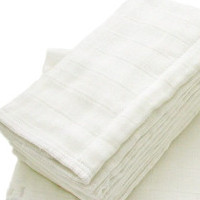
They were mostly made of cotton and muslin but now come in fabrics like bamboo and in combinations such as cotton and hemp.
Prefolds are suitable from newborn to potty training.
They are ideal for heavy wetters or overnight use depending on the type of fabric you go for.
They are handy as inserts in pocket nappies or burp cloths if you so wish.
Pros
- Like flats, they are easy to maintain, durable, affordable, ecofriendly, versatile, have secondhand value.
- They are more absorbent than flats because of the multiple layers and padded mid-section.
- They are fast drying if you go for cotton or muslin
- Ideal for newborns
Cons
- They’re time consuming especially when you are in a hurry.
- They may not contain explosives.
- They are inconvenient for outings and daycare.
Helpful Tips
I think that when it comes to nappies, we have to accept the fact that there are really no absolutes against blow outs.
They can only be curtailed if we make conscious efforts at trying to reduce them by tucking the nappies into the covers properly around the baby’s waist and the creases of his or legs, avoiding over stuffing the diaper.
Over stuffing creates gap at the bottom which will lead to leaks and things like that.
Contours are easy to use and different from both flats and prefolds in the sense that they come in an hourglass shape which takes away the burden of folding.
I used the ones made of light terry fabric.
They are good to use from birth onwards but wouldn’t recommend for overnight use or heavy wetters.
Pros
- Again, like flats and prefolds, they are easy to maintain, durable, affordable, fast drying and have secondhand value.
- They are less fiddly which makes them easy to use.
- They aren’t bulky when wet.
Cons
- I wouldn’t recommend them for outing or long travel
- They don’t wick away moisture from the baby.
- Not recommended for heavy wetters and for overnight.
- May not contain blowout.
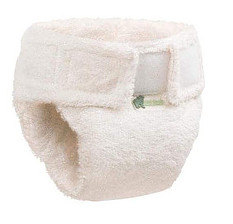
Fitted nappies are a much better version of contours and are ideal for newborns.
They do provide a snug fit, and their hourglass shape, elasticated legs and waists means less leaks.
They come in a variety of fabrics (hemp, fleece, bamboo, or cotton) and have sized and one size options.
Some fitted nappies come with inbuilt fasteners like velcro or snaps while some don’t.
Pros
- They are suitable for all ages.
- The elasticated waist and legs help to contain blowout and leaks.
- They come fitted already which makes them convenient and easy to use.
- They are excellent for overnight use and heavy wetters especially if they are of hemp or bamboo fabrics.
Cons
- They tend to be bulky when wet
- They are dearer than the flats, pre folds and contour.
Non-outer protective shell nappies have their pros and cons which you have seen for yourself.
One thing that stands out for me about flats and prefolds is their affordability and versatility.
The most obvious glitch about them is that you’ll have to spend extra, buying covers and snaps.
Types of Protective Covers
Protective covers are bought separately and must be used alongside the above nappies to help protect against leaks.
There are various types of covers.
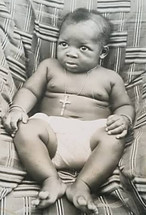
Plastic nappy pants were the most commonly used pre-modern cloth diapering.
They had elasticated legs and waists and were worn over the nappy like a pant. They came in various sizes.
Being plastic means a lot of heat, no air circulation and diaper rash. Seeing beads of condensed moisture on my babies’ bum was a regular occurrence due to the stuffiness they caused. That’s why I needed to “air ” their bums for a few minutes, ever so often. Plastic pants have a very short shelf life, tear easily after a few soapy rinses, are non-biodegradable and are of the bygone era.
The Polyester Urethane Laminate known as PUL is very popular in modern cloth diapering.
They come in the sized and one size options.
They are waterproof, washable, breathable, durable, and manageable.
I also like them because they can be sterilised which is a big thing for me.
Be aware though, that care has to be taken with PULs when washing them in the machine.
Avoid very hot temperature, fabric conditioners or dryer sheets as they can damage them.
Also note that they stick together when damp and can get damaged if left damp for too long.
Like plastic pants, PULs are non-biodegradable.
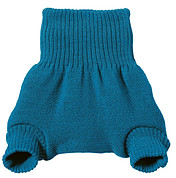
Wool covers are natural, breathable, and excellent for absorbency.
This makes them great for overnight use and for heavy wetters.
Just a note of caution here, some babies are allergic to wool, so be vigilant and watch out for any reaction.
The downside of wool is that they dry slowly.
If you machine wash, be careful with wash temperatures and tumble drying.
Fleece covers are very absorbent and excellent for heavy wetters and for overnight use.
I love them because they’re soft and very easy to manage.
They wash well in any temperature, are quick drying, and very budget friendly.
Like wool, they are breathable, allow for air circulation and reduce the chances of diaper rash.
Fleece are a great alternative to wool for baby’s who are allergic to them.
Nappies With Protective Covers
Modern cloth nappies come under this category.
They usually consist of a fabric interior and protective shell exterior added with inserts, soakers, doublers, boosters and liners for different levels of absorbency.
They come in both natural (like cotton, hemp, wool, bamboo) and synthetic fabrics (like microfleece and microfiber).
The nappies are held in place by built-in fasteners like snaps or velcro etc.
I have mixed feelings for velcro.
Although they are very easy to use and help you achieve a customised fit for your baby, they aren’t built to withstand the rigours of constant machine wash.
Besides that, they are tricky to wash too.
If you are familiar with velcro, you’ll know that they annoyingly stick onto other clothes in the wash.
You’ll have to pull them off other items of clothing and that’s extra work to add to your workload already.
Thankfully, some brands have thought about this sticky situation and have devised ways to prevent it.
Modern cloth nappies are very similar in design to disposable nappies. Pockets, all in ones, all in twos and hybrids fall under this group.
Pocket Diapers appear to be very popular among mums.
They are called pocket diapers because they have a pouch into which you can stuff cloth inserts.
It’s interior is usually lined with fabrics that wick wetness from the surface.
For added absorbency, you can add a doubler alongside the cloth insert.
They are ideal for both day and overnight use, as you can tweak them (by combining two types of fabrics) to achieve any absorbency level to suit your baby’s needs.
They come in sized or one size options which makes them ideal from newborns to potty training.
They are quick drying, convenient, durable, and easy to maintain.
To wash, you would have to remove the inserts and wash in baby mode settings preferably.
Note that too many inserts can cause the diaper to become bulky so instead of helping with absorbency, they can in fact leak, because the diaper becomes gappy at the bottom and fit snugly.
Price wise, there are both dear and budget friendly options.
Sleeve diapers are a variant of pockets. Instead of one pouch, they have two, each on both ends of the diaper.
They are less fiddly when stuffing your insert.
They can be washed in the machine without having to first remove the inserts as they come out during the wash.
If you don’t like removing inserts, they are the best for you.
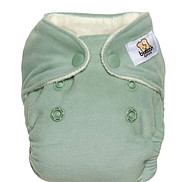
All in Ones (AIOs) are convenient and easy to use.
They are user friendly and great for outing, the creche and minders.
They are disposable nappies in reusable form.
The AIO consists of an outer protective shell onto which an overlay of absorbent fabrics are sewn to create a single nappy.
They are ideal for all ages.
A drawback for AIOs is that they are very slow to dry.
On top of it all, you don’t have the luxury of reusing one diaper multiple times.
All in Two (AI2) is different from the AIO because it has two separate parts.
An outer PUL exterior and an inner fabric overlay onto which you can attach or detach a soaker pad.
Unlike the AIO, the AI2 can be used multiple times if not soiled or wet.
All you need do is to replace the soiled soaker with a clean one.
You don’t need to wash the outer shelf as often, making them longer lasting than the AIOs.
AI2s are affordable, convenient, user friendly, and are very good for when you want to travel light or don’t want to over pack for an outing.

Hybrid nappies are designed for both disposable and reusable inserts.
They are very convenient for busy mums and versatile enough for those who choose to use both reusable and disposable inserts.
Hybrid nappies are ideal for travel, very long outings and for those times when washing is impractical. The holdup about them though is that they are expensive.
Inserts, Doublers, Boosters, Soakers And Liners
Most nappy brands come with additional inserts as part of the package while some are sold separately.
I would say be sure of what is included in the price before you pay for it.
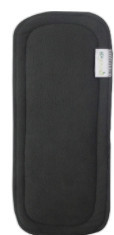
Inserts are those long rectangular strips usually stuffed into the pocket nappies.
They are used to trap in wetness and often come in a variety of fabrics, like cotton, charcoal, bamboo, and hemp.
Most pocket diapers come with microfiber inserts.
A doubler can be used with inserts for the pocket nappies for added absorbency.
It’s smaller in size and less bulky especially if it comes cut in an hourglass shape.
Doublers come in bamboo, cotton, and hemp fabrics.
Some mums like to combine two types of fabrics to achieve a higher level of absorbency.
Due to their size, they are excellent as inserts for newborns.
Soaker pads are designed for AI2s and are great for added absorbency.
Soakers come in cotton, hemp, and bamboo fabric, which allows you to choose the absorbency level you want to achieve, for either daytime or overnight use.
Boosters are also smaller than inserts and are used in AIOs for extra absorbency.
The good thing about boosters is that you can combine two types of fabrics to achieve the level of absorbency you want.
They come in fabrics such as bamboo, cotton, charcoal, and hemp and are ideal for heavy wetters and overnight use.
Liners are excellent for both wicking away wetness from the surface and to protect nappies from poo.
They are ideal for all types of cloth nappies. You could use flushable/disposable or reusable (fleece) liners.
I think flushable liners make dealing with poop a lot easier but again, everything boils down to your preference.
Types Of Fabrics
Hemp is a natural fabric.
It’s very thirsty and the most absorbent and least bulky of all the fabrics which makes it great for heavy wetters and overnight use.
The snag about it is that it’s stiff, rough, and scratchy and should be lined with a fleece liner for a soft and comfortable fit.
Hemp made in combination with cotton are easier to use but must still be lined with a microfleece liner for added softiness.
Cotton is absorbent and very affordable, although not as absorbent as the bamboo and hemp, they are durable and easily available.
Bamboo is a natural fabric but when processed, they come out as rayon (viscose) which is semi synthetic.
They are less bulky and more absorbent than cotton (especially after several wash cycles).
Like hemp, they excellent for heavy wetters and overnight use.
The down side to bamboo is it takes a lot longer to dry.
Charcoal bamboo is very absorbent and great for overnight use.
Microfiber is a synthetic fabric and commonly used as insert for pocket nappies.
They are efficient, quick drying and highly absorbent.
They don’t shrink even after several washes and tend to be durable.
Microfibre tends to start having containment issues over time due to detergent build up which causes the fabric to repel liquid.
Nappies made of this material are most susceptible to compression leaks, that’s why they have to be changed frequently.
Although they can hold up reasonable amounts of liquid, they don’t drink them up in the same manner as bamboo or hemp.
Therefore, when the nappy is full and undergo a squash from baby sitting forcefully on his or her bum or a squeeze from a firmly fitted car seat or pushchair harness, leaks are likely to occur.
Also, be careful not to place this fabric directly under baby’s skin as they can cause irritation.
If you must use it outside of the pocket nappies, it’s better to put a liner (a fleece liner ) over it.
This way, your baby’s bum isn’t in contact, significantly reducing the changes of irritation.
Sized or One Sized Nappies
A common confusion mums’ face is whether to buy a sized or one size diaper.
They both have their pros and cons.
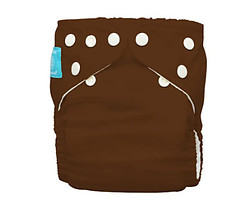
One of the advantages of buying a one size nappy is that you can use them throughout your baby’s diapering phase.
This means that you don’t have to keep replacing diapers as baby grows from birth to potty training.
For this reason, one size diapers are a more economical option.
They can be used for more than one child, that is if you have young children under two years of age.
All you need to do is to adjust riser buttons as they grow.
As easy as this may sound, riser settings on nappies appear to confuse many mums.
The good news now is that there are online resources accessible at your fingertips.
There are Facebook platforms, instructional videos on YouTube and apps created by manufacturers to help guide you every step along the way.
One sized nappies aren’t without cons.
Although they are mostly presented as suitable for all ages, we know that in reality it isn’t always the case.
That they are one size doesn’t imply it’s a one size fits all for all babies.
Most of the time, they fit awkwardly on preemies and newborns because even with the adjustments, they may be still too big for them.
Also, they don’t always have provisions for the umbilical cord, which is a no brainer for me.
One size nappies also undergo a lot of wear and tear due to frequent washing.
The Sized cloth nappy comes in sizes one and two or X small, small, medium, and large, depending on the brand.
They are the preferred choice for newborns or smaller babies because they provide a snug and customised fit and comfort.
They undergo less wear and tear because they are used for a specific period of time and can be kept away until when needed for another baby or for resell.
The cons are that you will have to replace them as your baby outgrows the size.
It’s not always the economical choice, if you have a tight budget.
There aren’t any hard and fast rule when it comes to deciding whether to go for the sized or one size option.
I think it will be a great idea to try both out in order to enjoy the benefits they provide.
Finally…
What do you think about cloth nappies? Do you have any experiences or advice to share?
We will be happy to hear from you. Please leave your comments below.
Thank you and stay safe.
Reference and further reads
